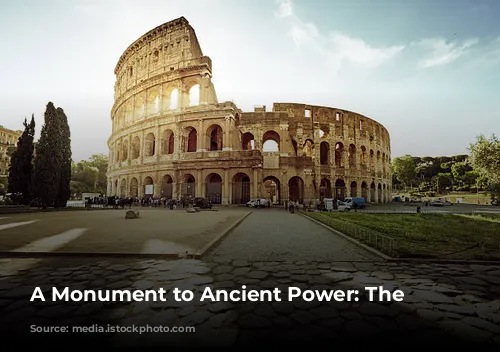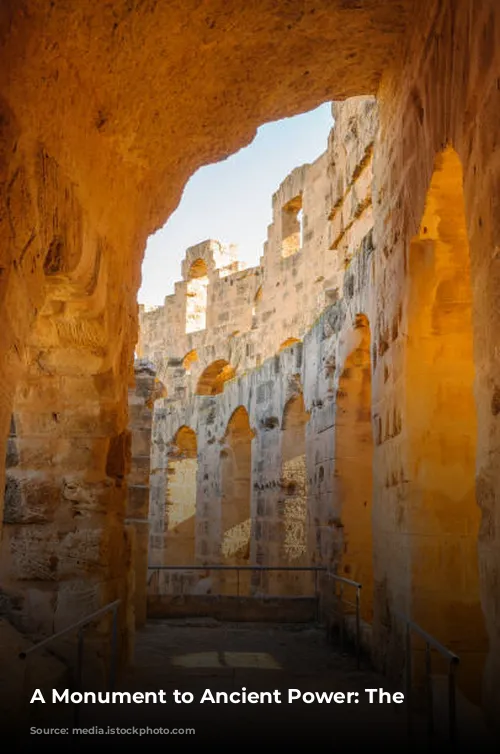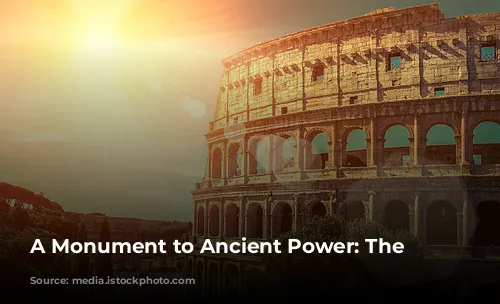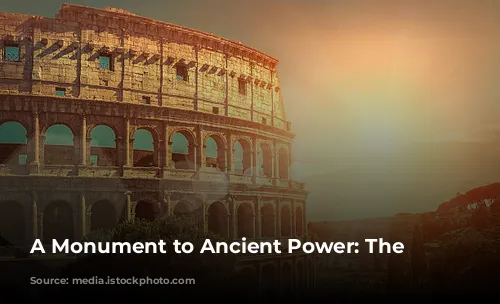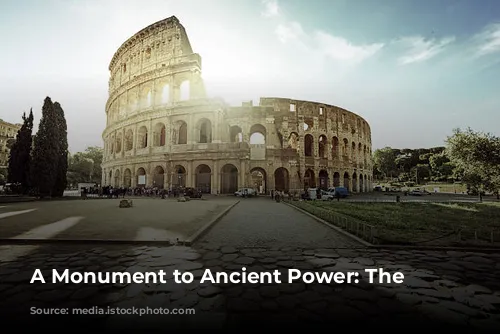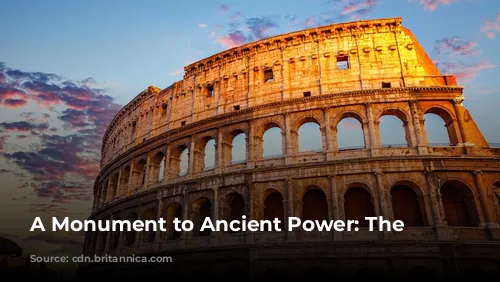Standing tall as one of the few remaining, mostly intact structures from the Roman Empire, the Colosseum stands as a testament to the architectural and engineering brilliance of ancient Rome. Its enduring presence makes it a major draw for tourists, contributing significantly to Italy’s tourism revenue. In 2018 alone, the Colosseum, Roman Forum, and Palatine Hill together generated a staggering $63.3 million (€53.8 million), making them the most profitable tourist attraction in all of Italy.
A History of Neglect and Revival
The Colosseum, sadly, fell into disrepair after the fall of the Western Roman Empire. During the 12th century, the Frangipane and Annibaldi families, powerful families of the time, repurposed the arena as their own fortress. This was followed by a period of even greater neglect in the late 15th century when Pope Alexander VI permitted the Colosseum to be used as a quarry. The once grand structure was stripped of its precious marble for other building projects. It was only in the 1990s, after over a thousand years of neglect, that state-funded restoration efforts began, breathing life back into this historical gem.
A Symbol of Imperial Might
The Colosseum’s construction began under the Roman emperor Vespasian between 70 and 72 CE, marking an effort to revitalize Rome after a tumultuous period known as the Year of the Four Emperors. Like other amphitheaters, Emperor Vespasian envisioned the Colosseum as a grand entertainment venue, a place for thrilling gladiator fights, dramatic animal hunts, and even awe-inspiring mock naval battles. It was a place where the Roman Empire could showcase its power and entertain its citizens.
A Legacy Built on Plunder
The completion of the Colosseum in 80 CE by Titus, Vespasian’s son and successor, marked a monumental achievement, a testament to Roman ambition. The fourth story was added by Emperor Domitian in 82 CE, completing the structure. It’s a poignant fact that the construction of this iconic arena was financed using plunder from Titus’s conquest of Jerusalem in 70 CE and built by enslaved Jews from Judaea. This somber aspect of the Colosseum’s origins adds a layer of complexity to its impressive legacy.
An Architectural Masterpiece
The Colosseum is an elliptical amphitheater built in Rome under the Flavian emperors of the Roman Empire. Also known as the Flavian Amphitheater, it’s a magnificent structure made of stone, concrete, and tuff, soaring four stories high. Its impressive dimensions, measuring 620 by 513 feet (189 by 156 meters), could accommodate as many as 50,000 spectators. The Colosseum, as we know it, was famously used for gladiatorial combat, but its story is far more complex and intriguing than that.

A Symbol of Imperial Power and Public Entertainment
The Colosseum, a giant amphitheater built in Rome under the Flavian emperors, stands as a powerful symbol of their reign. Construction began between 70 and 72 CE during the reign of Vespasian. Situated east of the Palatine Hill, on the grounds of what was Nero’s extravagant Golden House, it replaced a once grand artificial lake, a symbolic gesture signifying the shift from a private palace to a public space for entertainment. Vespasian, whose rise to power was humble, chose to replace the tyrannical emperor’s private lake with a public amphitheater that could host tens of thousands of Romans.

A Triumph of Engineering and Architecture
The Colosseum was officially dedicated in 80 CE by Titus, with a grand ceremony that included 100 days of games. Domitian, in 82 CE, completed the work by adding the uppermost story. Unlike earlier amphitheaters, which were often built into hillsides for extra support, the Colosseum is a freestanding structure built of stone and concrete, showcasing a complex system of barrel vaults and groin vaults. It stands 620 by 513 feet (189 by 156 meters) in total, a remarkable feat of engineering. The three lower stories are adorned with arcades framed by engaged columns in the Doric, Ionic, and Corinthian orders, a design element that heavily influenced Renaissance architecture. The structure’s foundation and facade are made of travertine, while volcanic tufa forms the secondary walls. Concrete was used for the inner bowl and the arcade vaults.
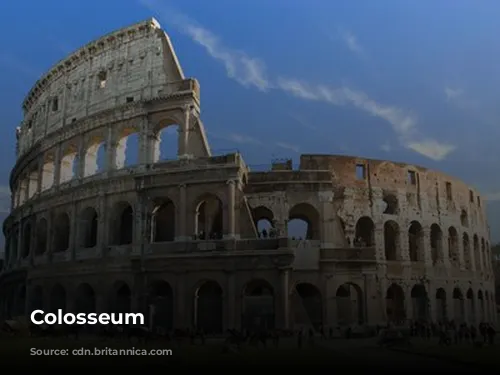
A Venue for Spectacle and Entertainment
The Colosseum, with its expansive arena, was designed to accommodate some 50,000 spectators, shielded from the sun by a massive retractable awning called a velarium. This incredible structure was supported by masts extending from corbels built into the top story of the Colosseum, requiring hundreds of Roman sailors to operate the rigging that extended and retracted the awning. The Colosseum was the stage for thousands of thrilling gladiatorial combats, contests between men and animals, and even larger battles, including mock naval engagements. While the arena was often linked to the martyrdom of early Christians, the historical evidence for this is uncertain.
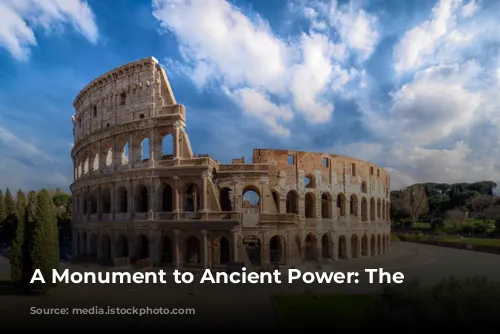
A Symbol of Resilience
The Colosseum, once a symbol of Roman might, experienced a dramatic decline during the Middle Ages. It was repurposed as a church, then as a fortress by the powerful Frangipane and Annibaldi families. Throughout its long history, it suffered damage from lightning strikes, earthquakes, vandalism, and pollution. The once-glorious marble seats and decorative materials were stripped away, leaving the Colosseum little more than a quarry for over 1,000 years. Fortunately, preservation efforts began in earnest in the 19th century, led by Pope Pius VIII. Restoration efforts were continued in the 1990s, breathing life back into this iconic structure. Today, the Colosseum stands as one of Rome’s most popular tourist attractions, welcoming close to seven million visitors annually. The structure continues to be a symbol of Roman resilience, a reminder of the empire’s legacy, and a testament to the enduring power of human creativity. Changing exhibitions relating to the culture of ancient Rome are regularly held within the Colosseum, ensuring that this historical treasure remains a source of fascination and inspiration for visitors from around the world.
